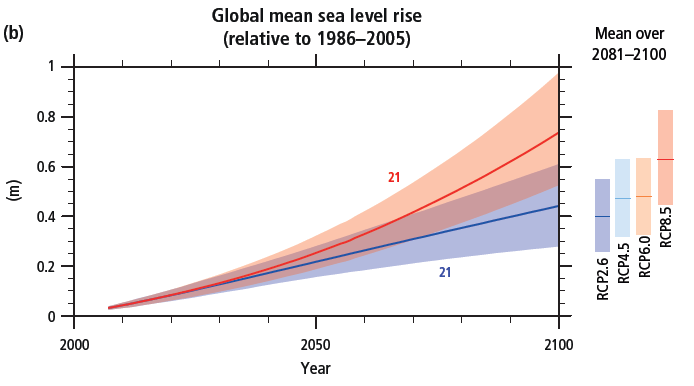- Sea Level Rise
Climate 101: Sea Level Rise and Ocean Warming

Sea Level Rise
One of the most direct and pronounced changes due to global climatic change is sea level rise (SLR). Easily modeled and quantified at multiple scales, SLR is commonly used as a landscape level example of climate change. SLR occurs as a result of thermal expansion of the oceans and melting of the polar ice caps and glaciers due to increasing global temperatures, which are especially pronounced in the higher latitudes.
Inundation by increasing sea levels will have variable impacts on ecosystems, depending on various factors including elevation, species composition (salt tolerance), inland migration pathways, and extent.
While SLR is not technically a climatic change itself (rather a result of major climatic changes), it is associated with specific measurable shifts that result in ecological impacts in much the same way as the other climatic changes described. It is too simplistic to treat SLR as purely a habitat loss or inundation, as some land cover types may expand or shift up inland in the face of SLR. Some habitat and community shifts are likely to occur, especially with a more modest rise in sea levels. However, as the rate of SLR increases, open water will become more prominent as other habitats diminish.

Ocean Warming
Ocean warming is also expected as a result of rising greenhouse gas (GHG) levels and global temperatures. Climate scenarios, called Representative Concentration Pathways (RCPs), describe different 21st century pathways of greenhouse gas emissions and atmospheric concentrations, air pollutant emissions, and land use.
Based on these scenarios, ocean warming is projected to be most pronounced in the surface waters of tropical and Northern Hemisphere subtropical regions. Estimates of ocean warming by the end of the 21st century are 0.6°C (RCP2.6) to 2.0°C (RCP8.5) for the top one hundred meters (IPCC 2014).
Warmer ocean temperatures will change the frequency of extreme events, such as tropical storms, and also change the habitat suitability for a wide range of marine and coastal species.
How will sea level rise impact Florida?
Learn more about sea level rise impacts in Florida.